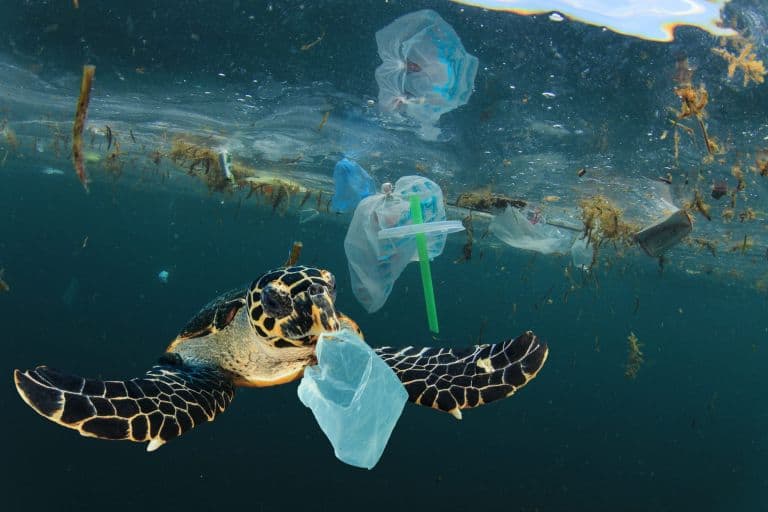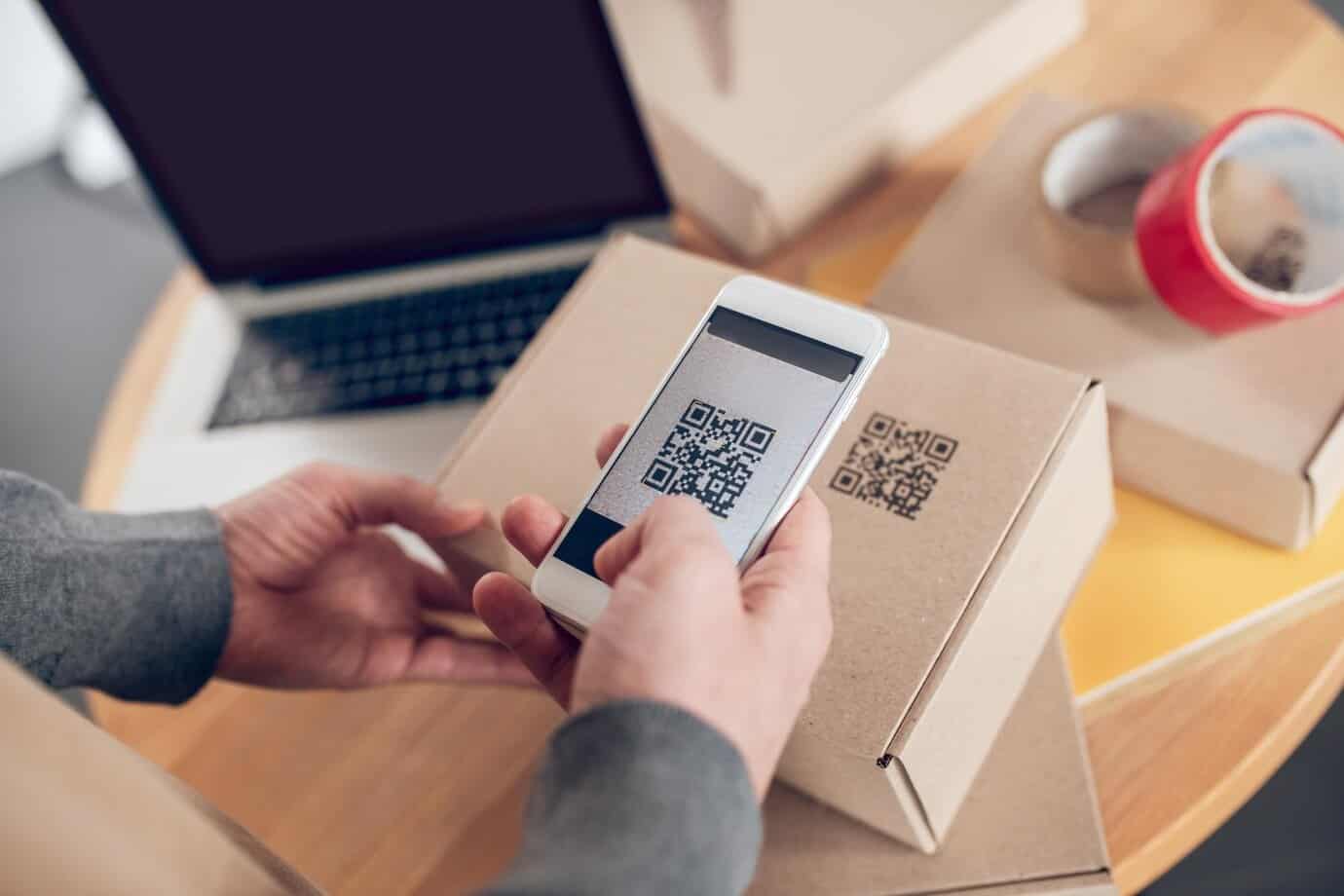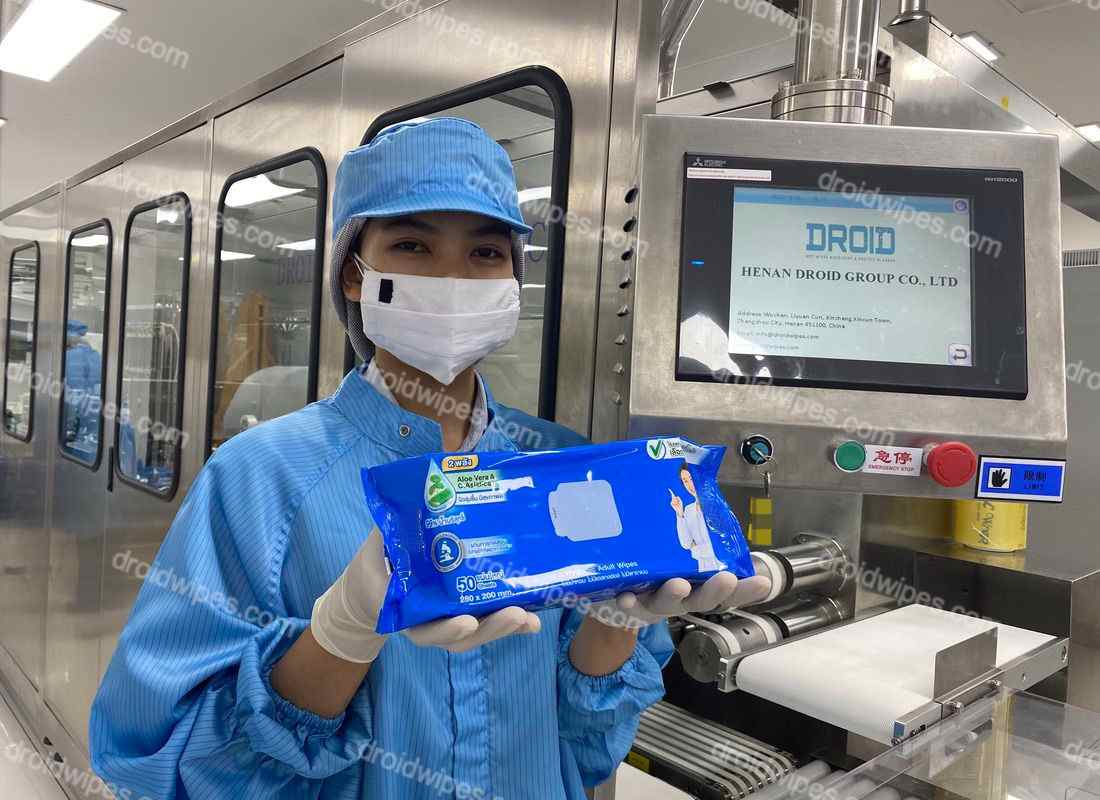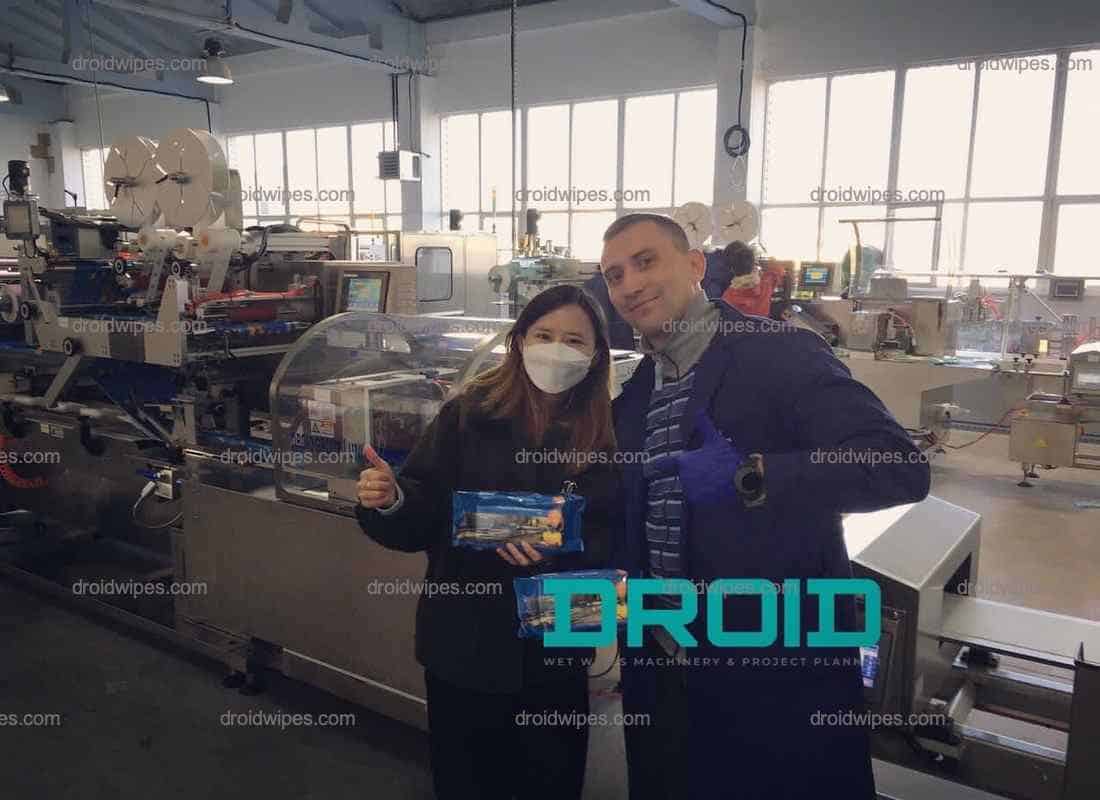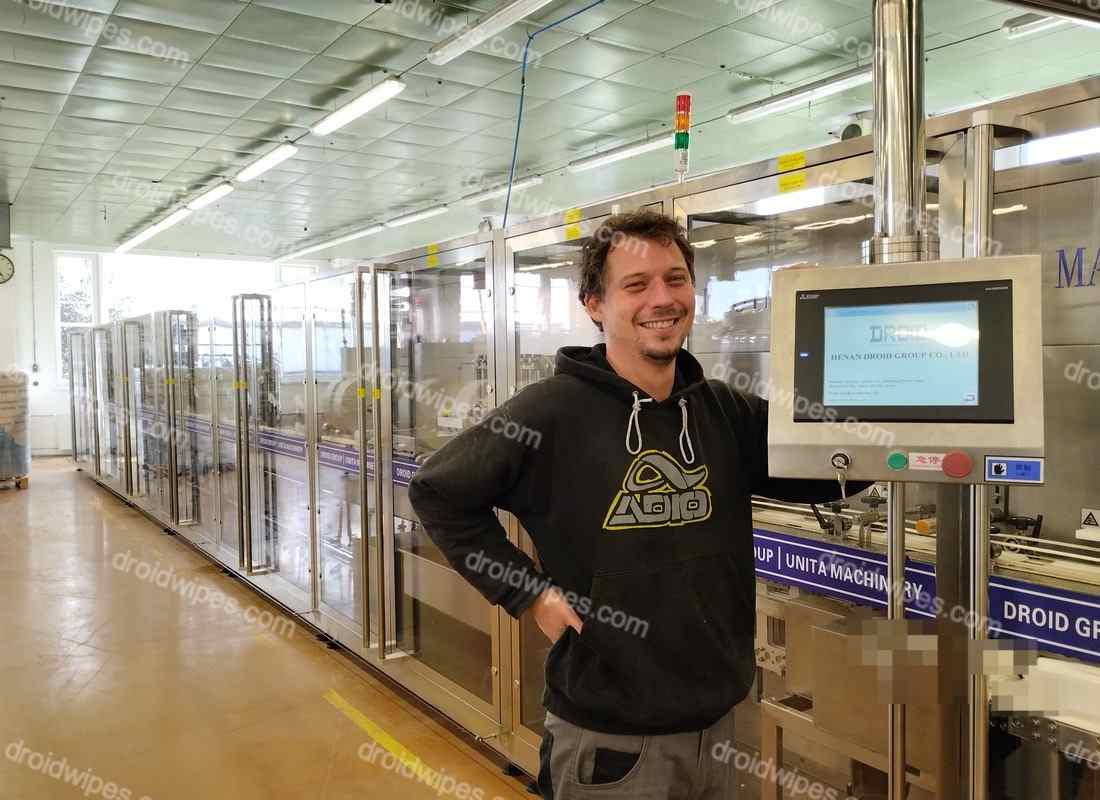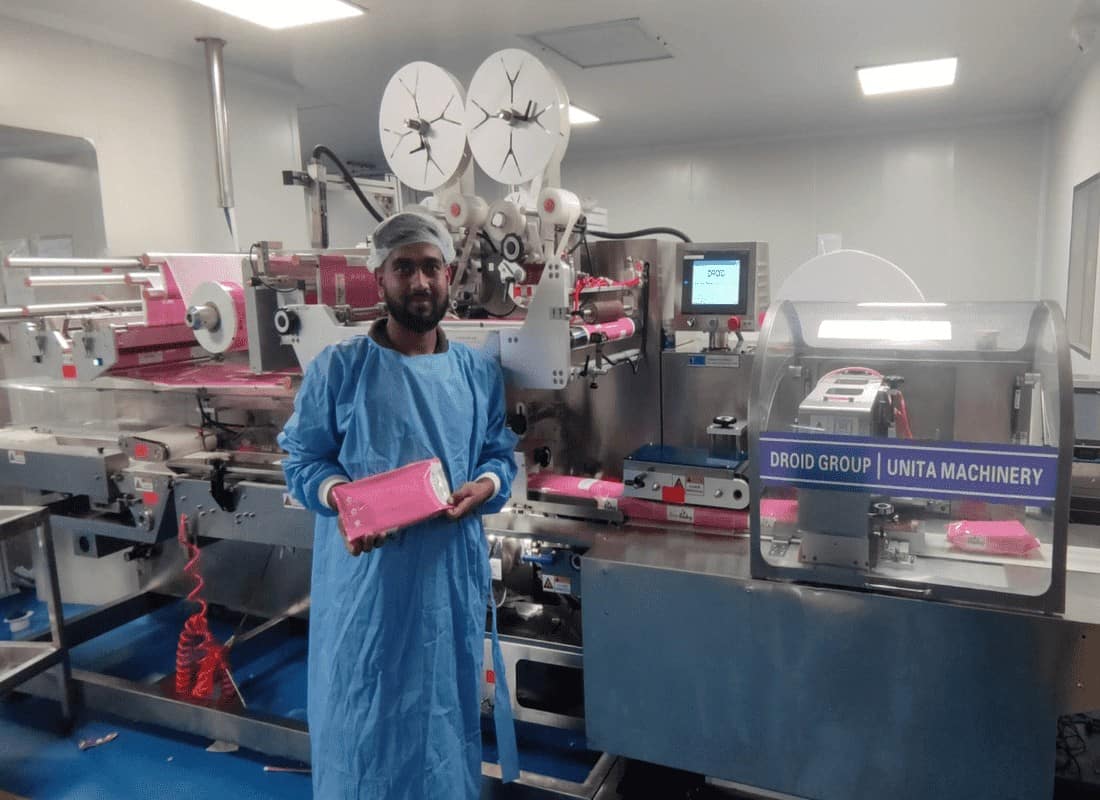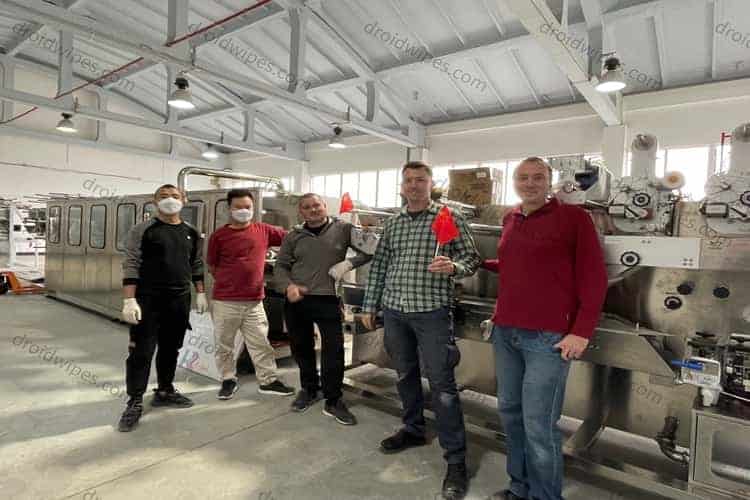Why Proper Disposal Matters?
There are serious social, economic, and environmental repercussions when wet wipes are disposed of improperly. Although wet wipes are practical and multipurpose, improper disposal—such as flushing them down the toilet or leaving them lying around—can result in major issues that affect many people.
Effects on the Environment
Wet wipes that are improperly disposed of often end up in soil, rivers, and seas, causing significant harm to the environment. Polyester and polypropylene, the non-biodegradable materials used to make the majority of wipes, may take decades to decompose. They damage marine life and contaminate the food chain by releasing microplastics into streams as they break down. Microplastics are often mistaken for food by fish and other marine organisms, posing health hazards to humans. Wet wipes must be disposed of properly to stop this unseen but growing environmental disaster.
Infrastructure Difficulties
Wet wipes are more difficult to flush away than toilet paper. Rather, they build up in sewage systems, resulting in severe obstructions and the formation of “fatbergs”—masses of waste and grease that clog pipes. Sewer networks are strained by these obstructions, which also result in spills and costly maintenance for municipal governments. Wet wipes are a significant contributor to sewage blockages in many areas, which can be costly to repair each year.
Costs of Money
In addition to harming the environment, improper disposal may be costly. It requires a significant amount of resources to clean up wet wipes from streets, rivers, and drainage systems. Cleanup operations cost municipalities and environmental organisations millions of dollars, which eventually trickle down to taxpayers.
Health Risks
Wet wipes that are thrown away can release hazardous chemicals and germs into the soil and water. Public health is at risk due to this contamination, particularly in regions where natural water is used for drinking or farming. Since contaminated water can transmit diseases, proper disposal is essential for community safety.
Moral Obligation
Wet wipes should be disposed of properly for both ethical and practical reasons. Customers contribute to ecosystem protection, pollution reduction, and a sustainable future by disposing of wipes in the trash rather than flushing or littering.
Design Packaging with Clear Disposal Instructions
Since packaging is sometimes the first and only point of contact between a wet wipes brand and its consumers, it may effectively encourage appropriate disposal practices. Clear, obvious instructions on the box can make a significant impact, as many customers are unaware of the potential harm that can be caused by flushing wipes or discarding them.
It’s crucial to use clear symbols and straightforward language. Bold typefaces, contrasting colours, and bigger symbols help ensure that the message is not missed. For example, a crossed-out toilet icon with the words “Do Not Flush – Dispose in Bin” is immediately comprehensible.
Manufacturers can further enhance their message by using QR codes that link to articles, infographics, or brief videos explaining the importance of safe disposal. Beyond just the packaging, this is an interesting method to connect with tech-savvy customers and reinforce the message.
Clear product composition labels, such as “100% Biodegradable – Safe for Composting,” can help customers make informed decisions and understand how to dispose of the goods adequately.
Positioning is also important. It is best to place the disposal instructions on the front or back of the pack so they are visible and easily readable. By combining the guidelines with inspirational phrases like “Protect Our Oceans – Dispose Responsibly,” the message may become more memorable and relatable.
Wet wipe manufacturers can transform packaging into a silent ally for sustainability by incorporating clear graphics, concise instructions, and educational touchpoints. This will decrease waste, safeguard the environment, and enhance brand recognition.
Partner with Influencers for Environmental Campaigns
One of the most effective strategies for wet wipe manufacturers to promote responsible disposal and encourage sustainable practices is to collaborate with influencers. Because they have earned the trust of their audience, influencers can convey significant themes in a genuine and relevant manner.
Brands can transform complex environmental challenges into engaging, easily readable content by collaborating with influencers who are passionate about eco-friendly living. They may relate such instances to more general problems, such as microplastics and river pollution, offer personal anecdotes, and illustrate the actual effects of improper disposal, including blocked pipes.
Campaigns that are creative may have an even greater effect. Influencers could, for instance, organise a “Responsible Disposal Week” during which they share eco-challenges, before-and-after lifestyle transformations, and advice to motivate followers to take action. Polls, Q&A sessions, and live streaming are examples of interactive elements that keep audiences engaged while reinforcing key points.
By facilitating communication between businesses and customers, influencers can help humanise marketing initiatives. They may promote biodegradable goods, discuss the environmental benefits they offer, and even collaborate with local groups on larger projects—particularly around product launches or events like Earth Day.
Manufacturers of wet wipes can reach a wider audience, educate customers, and encourage significant behavioural change by utilising influencer platforms. In addition to helping the environment, this tactic enhances the brand’s standing as a true leader in sustainability.
Leverage Augmented Reality (AR)
In addition to making the sustainability message more memorable, augmented reality (AR) offers a fun and engaging way to teach customers how to dispose of wet wipes properly. AR can turn a straightforward awareness campaign into an immersive experience that changes behaviour by fusing technology and narrative.
The path of a wipe after disposal may be shown using QR codes or app-based augmented reality experiences on wet wipe packaging. Customers who scan the code may witness a realistic simulation of how flushing wipes contaminate rivers, block pipes, and contribute to the formation of “fatbergs.” Customers can quickly understand the environmental effect thanks to this visual storytelling.
AR may also provide beneficial results. An animation, for instance, may show how biodegradable wipes decompose into compost, thereby improving soil and promoting a healthier ecology. Customers are better able to comprehend the need for appropriate disposal when they see these disparities.
Gamification further increases engagement. A simple augmented reality minigame, such as “throwing” virtual wipes into the appropriate bin to earn points or eco-rewards, makes learning enjoyable and encourages people to form healthier habits.
With shareable filters and effects, augmented reality campaigns can also be implemented on social media, generating viral engagement on sites like Instagram or TikTok. At events, brands may even utilise interactive augmented reality booths to educate about sustainable behaviours visually.
Manufacturers of wet wipes utilise augmented reality (AR) to transform dry instructions into engaging, shareable experiences, establishing the brand as creative, environmentally conscious, and committed to meaningful change.
Develop Educational Programs for Schools
Establishing educational programs in schools is an excellent approach to educating children about the environment and how to dispose of wet wipes properly from a young age. Schools are a great place to communicate sustainability ideas since children’s habits have a lasting impact on their families.
These programs are most effective when they complement current environmental studies, science, or life skills curriculum. Storytelling, role-playing, or easy experiments are examples of interactive education that may illustrate the adverse effects of flushing wet wipes on pipes, ecosystems, and public health. Age-appropriate language and realistic events ensure that the teachings are both enjoyable and memorable.
Activities may be modified to accommodate different age groups. While older pupils may chart local trash pathways or conduct fictitious “Don’t Flush Wipes” campaigns, younger kids could participate in colouring competitions or construct models of clean rivers. These exercises allow kids to take charge of environmental challenges while teaching them responsibility.
Field excursions add another layer of influence. Students gain practical knowledge of waste management and its impact on the environment through field trips to recycling plants, wastewater treatment facilities, or nature reserves.
Collaboration with educators is essential. It is simpler to successfully incorporate these programs when instructors are given ready-to-use lesson kits, activity guidelines, and even training sessions.
Last but not least, expanding these programs to the larger community—for example, by holding parent-child seminars or family clean-up days—increases their reach and strengthens constructive behaviours at home.
Wet wipes makers establish themselves as pioneers in sustainability education by funding school initiatives, encouraging a generation that values proper disposal and contributes to a cleaner future.
Incorporate Disposal Messaging in Advertisements
One of the best methods for wet wipes companies to encourage responsible behaviour and reaffirm their commitment to sustainability is to include explicit disposal messaging in their advertising. Since advertisements can reach large audiences, they are the ideal medium for reminding customers that appropriate disposal is just as important as the actual goods.
An ad narrative may organically include a disposal message. Commercials may depict a family conveniently utilising wet wipes before disposing of them in the trash, rather than only emphasising the qualities of the product. As a result, proper disposal seems like a logical next step in daily life.
A lasting impression may also be created by striking visual contrasts. A brief commercial, for instance, may show the harm that flushing wipes cause—clogged pipes and contaminated streams—before cutting to a scene of proper disposal, thereby creating a cleaner environment.
The message is sure to stay when memorable phrases like “Use It, Bin It, Save the Planet” or “Flush-Free, Worry-Free” are combined with striking imagery.
This is furthered by digital efforts that utilise forms that promote sharing and interaction, such as interactive advertisements, social media carousels, or swipe-through disposal recommendations.
Disposal messages may be displayed in a variety of media, including billboards, posters, transit advertisements, YouTube videos, and TV commercials. “Think Before You Flush: Dispose Responsibly” is a simple billboard message that may inspire thousands of people to take action.
Brands establish a reputation as environmentally responsible leaders and educate customers by regularly including disposal instructions in their advertising. This small action encourages healthier behaviours, reduces environmental damage, and integrates sustainability into the consumer experience.
Create Gamified Mobile Apps
Creating gamified mobile applications is a creative approach to make learning engaging and entertaining while teaching users the value of properly disposing of wet wipes. Gamification encourages long-lasting habits and ensures users retain what they learn by using challenges, incentives, and engaging images.
Players may learn the “dos and don’ts” of garbage management via mini-games. To win points or badges for making the right decisions, players must sort virtual wet wipes and other objects into the appropriate containers in a timed race. This straightforward system of rewards encourages positive behaviour and keeps gamers returning.
To help users understand the effects of their choices, the software may also replicate real-world outcomes of inappropriate disposal, such as a flushed wipe blocking pipes or contaminating rivers. These images reinforce the environmental message.
Apps may offer rewards such as “Sustainability Champion” badges, unlocking levels, or even coupons for eco-friendly products to encourage user engagement. This fosters brand loyalty while transforming education into a fulfilling experience.
The software is both instructional and social, incorporating instructional materials such as videos, infographics, and quick tips, as well as a scoreboard for friendly competition. To raise awareness, users may even post their accomplishments on TikTok or Instagram.
Wet wipes companies can establish themselves as pioneers in eco-innovation, engage tech-savvy customers, and encourage long-lasting habit change by gamifying sustainability—all while making learning fun.
Use Social Media for Community Engagement
One of the most effective and economical ways to promote sustainable practices and responsible wet wipe disposal is through social media. Brands can establish direct connections with customers, initiate discussions, and foster an environmentally aware community by utilising social media platforms like Facebook, Instagram, and TikTok.
Start with visually appealing materials, such as infographics, short films, and animations, that illustrate how flushing wipes harm animals, clog pipes, and pollute waterways. The message becomes memorable and intimate when these images are combined with realistic tales (such as plumbing accidents in the home).
By encouraging people to share their responsible disposal practices, hashtag initiatives like #ThinkBeforeYouFlush or #TrashItRight may transform awareness into a movement.
Interactive forms further increase engagement. Polls, quizzes, and competitions keep followers informed and engaged, while live Q&A sessions with influencers or environmental specialists may address frequently asked issues. For example, a quiz on “dos and don’ts” in disposal may provide discounts on eco-friendly products to those who score well.
Tutorials, funny sketches, and animated tales are examples of short-form video material on Reels and TikTok that rapidly capture viewers’ attention and become viral.
Engagement must feel reciprocal above anything else. Customers are shown that their opinions are valued when comments are answered, user-generated content is shared, and conversations are encouraged.
Wet wipe manufacturers can enhance their position as leaders in environmental responsibility and contribute to global protection by establishing a movement around sustainable wet wipe usage through continuous social media engagement to inform, inspire, and educate.
Retailer Collaboration
Retailers are strong allies in promoting responsible wet wipe disposal, as they are a crucial touchpoint where customers make purchasing decisions. Manufacturers can expand their sustainability reach, influence consumer behaviour at the point of sale, and enhance their brands’ environmental commitment by collaborating with retailers.
In-store displays and signage are easy-to-use but powerful tools. Right where customers are making product selections, shelf talkers, posters, or banners with slogans like “Dispose in the Bin, Not the Toilet” can draw their attention. By using graphics, such as symbols or brief diagrams, the message becomes more understandable and less likely to be overlooked.
Additionally, retailers may provide educational information by using brochures, QR codes on receipts, or counter displays that link to articles, movies, or interactive experiences about proper disposal.
Co-branded environmental initiatives spread the word even further. A merchant may, for example, organise a “Sustainability Week” that includes seminars, in-store demonstrations, or social media integrations emphasising the appropriate use and disposal of wet wipes.
Positive behaviours may also be encouraged via loyalty schemes. Making sustainability a rewarding option, customers could receive points or discounts for using biodegradable wipes or participating in disposal awareness challenges.
Digital cooperation is just as vital. Retailers can ensure that online consumers receive the exact instructions as in-store customers by including disposal reminders on e-commerce product sites, order confirmations, and post-purchase communications.
Manufacturers and retailers may collaborate on biodegradable product lines, more transparent packaging, and customer behaviour analytics, even at the supply chain level.
Wet wipes companies may reach a larger audience, provide regular education, and encourage genuine behavioural change by working with retailers. This will help the environment and solidify their shared position as sustainability leaders.
Offer Biodegradability Awareness
To assist customers in making informed decisions and reduce the environmental impact of wet wipes, it is essential to increase consumer awareness of biodegradability. Many individuals improperly abuse and dispose of wipes because they don’t fully understand the difference between biodegradable and non-biodegradable wipes. Brands may establish themselves as leaders in eco-responsibility and promote sustainable practices by educating customers.
Clear, transparent packaging is the first step. Products should have labels that indicate if they are biodegradable and include an explanation of what that really means. For instance, “Decomposes naturally within six months under composting conditions.” Customers are reassured that their purchase benefits the environment.
Ads may graphically contrast biodegradable and conventional wipes, demonstrating how one decomposes into natural components while the other persists for decades. Videos, infographics, and side-by-side demonstrations make a powerful, lasting impression.
Live demonstrations, events, and workshops can further enhance comprehension. Customers are better able to relate to the message when they witness biodegradable wipes decomposing in composting facilities.
The discussion may be amplified via online platforms, such as influencer collaborations and social media postings. The idea is made understandable and shareable through brief “Did You Know?” videos or influencer reviews that outline the significance of biodegradable wipes.
Making clear what should be disposed of is also essential. Although many people believe that biodegradable wipes can be flushed, proper composting or binning is still necessary for them to decompose completely.
Last but not least, long-term change may be encouraged by rewards such as savings for converting to biodegradable wipes or environmentally friendly subscription services.
Brands can encourage responsible behaviour, reduce waste, and gain the confidence of environmentally conscious customers by raising awareness of biodegradability through packaging, advertising, and education—all while preserving the environment for future generations.
Engage in Community Cleanup Drives
Wet wipe manufacturers can effectively demonstrate their dedication to sustainability and educate the public about proper wet wipe disposal by organising community cleanup initiatives. These gatherings do more than just pick up trash; they raise awareness and foster a sense of collective responsibility for environmental preservation.
Brands let volunteers see firsthand how often wet wipes wind up in parks, rivers, and streets by participating in or planning cleanups. This visible effect lends the issue a tangible presence and provides an opportunity to educate people about how improper disposal contributes to congested sewage systems and microplastic contamination.
Cleanup campaigns are also a great way to promote sustainable options. Brands may transform the event into a practical learning opportunity by distributing eco-friendly kits, biodegradable wet wipe samples, or basic disposal instructions.
Including participatory components, such as competitions to see who can gather the most garbage, keeps people interested. To leave a lasting impression of the brand’s green values, winners may receive eco-friendly incentives or product discounts.
Impact is increased via collaboration. Reach is increased, high-visibility venues like beaches or riverbanks are secured, and the brand’s position as a socially conscious leader is strengthened by collaborating with local governments, NGOs, and schools.
These efforts may be amplified via social media. By sharing participant stories, videos, and live updates, along with promoting branded hashtags, you can inspire others to participate and spread the word beyond the event.
Wet wipe companies foster long-term habits and provide immediate environmental benefits by actively spearheading cleanup campaigns. These programs transform community action into significant change by fostering loyalty, trust, and a reputation for authentic sustainability leadership.


